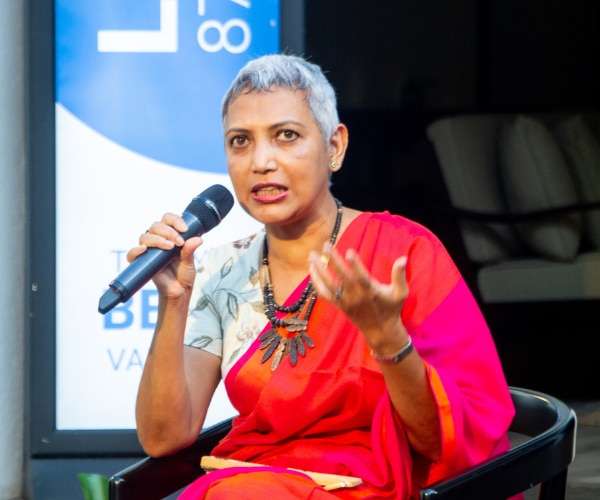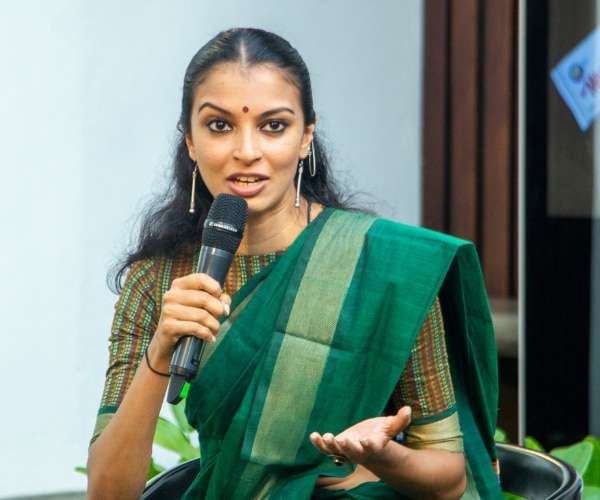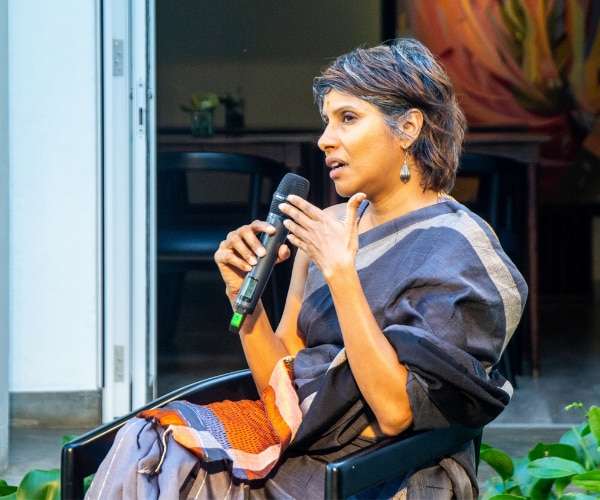
Mar 17 2021.
views 525


Discussing topical issues faced by women in the creative sphere, moderator Savithri Rodrigo put the panellists through their paces at the third session of the Cargills International Women’s Day Festival - The Changemakers.
Day three of the festival hosted the Creative Forces session which celebrated those who have revolutionized the creative arts. The panellists were Author and Publisher Ameena Hussein, inter-disciplinary artist and Pro Helvetia awardee Layla Gonaduwa and Principal Dancer of the Chitrasena Dance Company, Thaji Dias.
The festival took place on a balmy tropical evening amidst a coterie of females with a few men in their midst at Lake Lodge, a small luxury boutique hotel in the heart of the city. The event was moderated by Savithri Rodrigo the founder and creator of the online digital programme Kaleidoscope who has joined forces with Taru, from Table by Taru at Lake Lodge to host Cargills International Women’s Day Festival - The Changemakers.
Speaking on the issue if women have a bigger role to play in the creative space especially now when there is a lack of freedom and the creative space is squeezed for every gender, artist Layla Gonaduwa said “creativity can come out in several ways. You don’t necessarily have to be an artist. Creativity permeates everything you do, from your thought process to how you engage in something. I would like to think that most artists have a wider world view and we are more open to things. Where women are concerned I am sure they too contribute within their family or social groups in a creative way. However, at the same time, the problem is when they want to go a bit further they don’t have any help. There are times when families are supportive but it is difficult to find.”
For writer Ameena Hussein, her belief is that people look at subjects in a different way. “Everyone’s view is legitimate even a racist’s view or that of a religious chauvinist. But just as much then everyone else’s view has to be legitimate and respected. They have to be given the freedom to say what they have to say. In today’s climate, I think that is lacking. More than the men and women divide, it is about what you are able to say and what you are not able to say. The sad story of the Mannar poet (the poet whose poem was mistranslated and as a result he was arrested) is a sad and tragic commentary on our society. This paves the way for me to understand if a minority write, Tamil, Burgher, or Muslim, will think a hundred times before they say anything as unfortunately, that is the climate we have to work within and try to combat. We have to make others see what is happening in our creative space” she added.
The principal dancer of the Chitrasena School of Dance Thaji Dias detailing her experience said “In the dance sphere the issue that we have had is the pioneers in the field have always been male. Not just in dance but in music and drama too, so there is a social perception that a male figure is the leader. Even now, although in my own family which is female-dominated there is some difficulty to move out of the space and work freely as there is this perception that males should be the dominant force in our sphere. I think after my grandmother started dancing it has somewhat been easier for females to dance and also contribute freely to the creativity of dance.”
Discussing the issue that many women who graduate in the creative streams do not actively pursue a career in the creative field, Layla offered the view that most of the graduates not from Colombo and are from rural areas. Most of them get married to people they meet within the university and when they go back there is a conscious decision that the male will take on the artistes role.
Layla also said “This thinking originates mostly from the male side. The female is very docile when it comes to those decisions and tend to take a nurturing role. The artists I have come across from outside of Colombo actually struggle to find the time to engage in creative activities as they have so many other things to do while supporting the husband to be an artist. Even with single women, they prefer to go into teaching. The highest number of female graduates in the creative streams go into teaching and they don’t practise art at all. It is very discouraging as the numbers are not that great when it comes to females.”
Addressing the topic of what encouragement the panelists would give to women who are considering but are fearful of taking the plunge and entering the creative industry, Ameena encapsulated the collective thoughts of the trio by saying “the creative arts is not like any other job. If you want to do it and can’t do it you will die! It is basically that kind of feeling. If you are frightened don’t worry there will come a time when that desire to create will be greater than your fear and you will go ahead and do it."
0 Comments